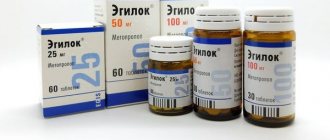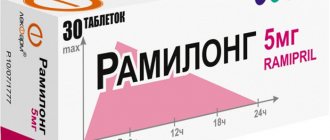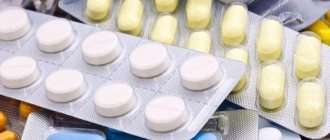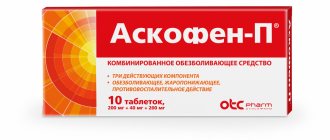“... the dashing comrade of our grandfathers,
He is a friend of Venus and the feasts,
He is the god of dinners at dinners,
in his gardens - He is the god of gardens"
The young Pushkin’s admiring description of an elderly man, distinguished from his peers by his tireless energy and toned torso, is rather the exception in everyday life than the rule. We are all different, but most people want to be healthy, happy and active, to live a quality life at any age.
Description of the drug
The product in question is used in medical practice to improve blood circulation in the body, which allows the tissues to be saturated with oxygen and essential nutrients. This has a positive effect on the functioning of all internal organs and systems. Since a deficiency of oxygen and minerals in cells often develops during pregnancy, many women are prescribed Riboxin during pregnancy.
It is known that during the period of bearing a child, many women suffer from exacerbation of cardiovascular diseases. The drug helps restore heart rhythm, improve blood circulation in myocardial tissues, and prevent the development of various complications.
Tablets are used to treat and prevent conditions associated with fetal hypoxia. In addition, Riboxin has a positive effect on the liver and is used for hepatitis and other diseases of the organ.
Increasing the efficiency of medical care for children of different ages, including the youngest, is one of the most pressing medical and social tasks. Hypoxic-ischemic and infectious lesions of the central nervous system require special attention in the field of neonatal and pediatric pathology. Problems of perinatal pathology are relevant both due to their high frequency among diseases of newborns and children of the first year of life (according to a number of authors, from 60% to 80% with a tendency to further increase), and due to the presence of unresolved issues of diagnosis and therapy. To this it should be added that perinatal lesions of the central nervous system contribute to the development of early psychoneurological disability (early disability among children occurs in 60-70% of cases) [1-4].
Hypoxic-ischemic lesions of the central nervous system
One of the most significant pathogenetic factors of perinatal damage to the central nervous system of newborns is hypoxia. Fetal hypoxia, which often develops as a result of pathological pregnancy, contributes to the birth of a premature baby with impaired respiratory function. Premature, and especially very premature, children are characterized by pronounced physiological abnormalities. These include hypercatecholaminemia, carnitine deficiency, loose type of coronary arteries, which in turn leads to significant inhibition of the synthesis of macroergs in the mitochondria of cardiomyocytes and the predominance of the carbohydrate component of metabolism, resulting in a cascade of pathobiochemical and pathobiological disorders. All this leads to the formation of respiratory acidosis with the secondary development of tissue hypoxia and metabolic acidosis. Hypercatecholaminemia promotes stimulation of the vasomotor center and cardiac activity, increased arteriolar tone and hypertension, further leading to arrhythmia, decreased sensitivity of adrenal receptors and ultimately to severe heart failure. As a result, extremely premature babies lose the ability to adequately respond to postpartum changes in blood circulation, which in turn leads to pronounced functional stress in the cardiovascular system.
As is known, the blood circulation of the fetus has features, which consist primarily in the fact that the lungs do not carry out the respiratory function, and therefore the pulmonary circulation does not function, while oxygen comes from the placenta through the umbilical vein and passes through the inferior vena cava into the right atrium. In order for oxygenated blood to enter the systemic circulation, the fetus has major fetal ducts: the duct of Arantius between the umbilical vein and the inferior vena cava, connecting the right and left atria, and the ductus arteriosus between the aorta and the pulmonary trunk. After birth, they should normally close, which often does not happen in very premature babies.
The consequence of metabolic acidosis is the worsening of circulatory disorders in all tissues of the body, including circulatory disorders of brain tissue. The emerging instability of autoregulation of cerebral blood flow due to the morphofunctional immaturity of its main components is accompanied by a high frequency of ischemic and hemorrhagic brain lesions in newborns, which in turn lead to various deviations in neuropsychic development and early childhood disability of varying severity.
According to a number of authors [4–7], 85% of all perinatal lesions of the central nervous system in premature infants appear during the first week of their life.
Analysis of the pathophysiological mechanisms of post-hypoxic brain damage in premature infants led to an understanding of the need for early pharmacological correction. Such correction is intended to prevent or at least significantly reduce the severity of brain damage, increase therapeutic and rehabilitation potential, and improve the prognosis of the disease [4, 8–10].
When considering the problem of early pharmacological correction, it should be borne in mind that there are divergent views on the duration of the so-called “therapeutic window”, within which pharmacological neurocytoprotective correction for hypoxic and ischemic disorders can be considered effective. In the literature [7, 10], one can find the following range of this “therapeutic window”: from 2 to 48 hours after the development of hypoxic-ischemic disorders. This “therapeutic window” framework is associated with the postulate that the most significant cellular losses of nervous tissue develop 2, 6 and 48 hours after birth due to the oxidative stress that accompanies brain reperfusion, when the phase of perfusion deficiency passes into the phase of reperfusion with highly oxygenated blood, which in turn, is accompanied by excess production of highly reactive free radicals or products that generate them [11]. In such a situation, in the first hours and days of life of children who have suffered ante- and intranatal hypoxia and ischemia, a pronounced imbalance in the regulation and distribution of cerebral circulation occurs, which contributes, especially in premature infants, to the frequent development of ischemic and hemorrhagic disorders of brain tissue in the early neonatal period [4, 12].
The most promising areas for drug correction of hypoxic and ischemic lesions of brain structures in both adults and children are currently considered [7, 13] the use of antihypoxants that regulate intracellular metabolism, which include natural metabolites, which at the same time activate the production of macroergs under conditions of oxygen deficiency and have antioxidant activity [14].
One can confidently include the drug Cytoflavin (NTFF POLYSAN LLC, St. Petersburg) among the medicinal products that meet these requirements. This drug is one of the few neurocytoprotectors whose effectiveness and safety have been assessed from the standpoint of evidence-based medicine.
Cytoflavin has a neurocytoprotective, antihypoxic, antioxidant effect, positively influencing the processes of energy formation in the cell, reducing the production of free radicals and restoring the activity of antioxidant enzymes [15]. Thus, in biopharmaceutical studies [16, 17], it was found that cytoflavin improves oxidative metabolism under ischemic conditions, preventing a sharp decrease in ATP levels, stimulates the activity of adenylate cyclase, which allows anaerobic metabolism of glucose without the formation of lactate. This drug also stimulates reparative processes and limits the area of ischemic damage [18]. In addition, cytoflavin improves blood oxygenation and activates cellular respiration, as well as ion transport and protein synthesis. The drug, preserving the ribosome apparatus, activates the intracellular synthesis of nucleic acids, enzymatic processes of the Krebs cycle, promotes the utilization of glucose and the synthesis and intracellular accumulation of ATP and other macroergs [19]. It is also important that when treating patients with hypoxia and cerebral ischemia, cytoflavin promotes the resynthesis of γ-aminobutyric acid in neurons [20, 21].
Cytoflavin is a harmonious combination of succinic acid, riboxin, nicotinamide (vitamin PP) and riboflavin mononucleotide (vitamin B2). Succinic acid is a central substrate of the Krebs cycle and can be included in this cycle in ionized form, crossing cellular and mitochondrial membranes. Riboxin helps inhibit the enzyme xanthan oxidase and suppress free radical processes, thereby providing an antioxidant effect. Riboflavin, which is a profactor of the main coenzymes of the respiratory chain flavin mononucleotide and flavin adenine dinucleotide, has a direct antihypoxic effect, which is associated with the activation of flavin reductases and restoration of ATP levels, as well as antioxidant properties due to the reduction of glutathione. Nicotinamide activates the antioxidant systems of ubiquinone oxyreductases, which have a protective effect on cell membranes.
Thus, all components of cytoflavin are inducers of cellular metabolic pathways and activators of energy production processes, which in turn promotes the utilization of free oxygen and, accordingly, reduces the level of peroxide processes. An important advantage of this drug is the presence in its composition of methylglucamine, a transmembrane transporter that transfers compounds associated with it through cell membranes into the internal structures of the cell, where all the main pathochemical disorders occur during hypoxia and ischemia.
It should be noted that thyroid hormones play an important role in the development and maturation of child brain structures. Neonatal transient hypothyroidism has an adverse effect on the development of children (physical, speech, mental), as well as on the level of their social adaptation [22, 23]. In turn, the main pathogenetic mechanisms for the development of perinatal lesions of both the nervous system and the thyroid gland are hypoxia and, accordingly, insufficient tissue perfusion, which contributes to an increase in energy deficiency and disruption of intracellular homeostasis. Considering the disorders described above, it becomes clear the importance of using antihypoxants with membrane-stabilizing effects for perinatal lesions of the central nervous system and thyroid gland [7, 10], which may include cytoflavin. Its effectiveness has been established in a number of studies.
In the study by V.I. Strukova et al. [24] analyzed the effectiveness of basic therapy and therapy that included cytoflavin in the treatment regimen for children aged 7 days to 1 month, born at a gestational age of 37 to 42 weeks and suffering from cerebral ischemia and transient hypothyroidism. In the group of patients receiving Cytoflavin, on days 5-6 of therapy there was a statistically significant decrease in the severity of cerebral tissue ischemia compared to the group of patients who did not receive Cytoflavin. A statistically significant faster decrease in serum TSH levels was also found in patients treated with Cytoflavin. The results of the study also showed the effectiveness of cytoflavin in the treatment of children with extremely low and very low body weight with post-hypoxic myocardial damage and significant metabolic disorders. They showed normalization of acid-base balance within 24 hours from the start of treatment without increasing the risk of developing intraventricular hemorrhages. Analyzing the average duration of symptoms of perinatal central nervous system damage, the study authors came to the conclusion that their duration was significantly shorter (1.5-2 times) in the group of patients receiving cytoflavin. These symptoms included impaired motor activity, vegetative-visceral dysfunction, sleep disturbance, decreased appetite and impaired weight gain.
The results of the study conducted by S.O. were interesting and useful from a practical point of view. Rogatkin et al. [25], who studied the effectiveness of cytoflavin in post-hypoxic lesions of the central nervous system in premature newborns. The cerebroprotective effect of this drug was confirmed. Thus, among newborns who received cytoflavin, compared with those who did not receive this drug, a statistically significant level of reduction in the incidence and severity of ischemic and hemorrhagic lesions of the central nervous system was revealed. This corresponded to a lower level of concentration of neurospecific proteins in the blood, which is primarily associated with a more rapid normalization of acid-base balance, partial pressure of oxygen and carbon dioxide, as well as the elimination of lactic acidosis.
The beneficial effect of cytoflavin on cerebral ischemia in premature newborns was also established by A.G. Antonov et al. [26]. They found that with the use of cytoflavin, more rapid and complete psychomotor development of children occurred during the first year of life.
It is important to note that, according to the results of these studies, cytoflavin was well tolerated by children and they had no side effects.
Thus, data from a number of studies convincingly demonstrate the neuro-(cerebro-)protective effect of cytoflavin in the treatment of children with hypoxic and ischemic lesions of the central nervous system, as well as the cardio- and thyroid-protective effect of this drug in the category of patients under discussion, which certainly provides grounds for its use for the treatment of children in the first months of life with neurometabolic disorders as part of the complex treatment of perinatal CNS lesions.
Infectious lesions of the central nervous system
It is known that infectious lesions of the central nervous system occupy one of the leading places among all infectious diseases. They are characterized by a severe course and a high mortality rate (8-36%). The incidence of residual damage to the nervous system is 26–75% [27]. Signs and manifestations of persistent organic damage to the central nervous system in the residual period are observed in almost 50% of children who have suffered an infectious lesion of the nervous system [27], and therefore, increasing the effectiveness of treatment for children with infectious diseases, and primarily with bacterial purulent meningitis and viral encephalitis, is one of the most pressing medical and social problems.
One of the main manifestations of infectious processes in the central nervous system is damage to the vascular bed and disruption of the hemostatic system. Vascular lesions that develop against the background of infectious diseases include vascular occlusion and stenosis, the development of which, in turn, is associated with a violation of the rheological properties of the blood. In case of infectious lesions of the central nervous system, the most common is generalized vascular damage, involving the cerebral vessels in the pathological process. Their damage is characterized by damage to the endothelium, disruption of neurovascular regulation and coagulation, which dictates the need for timely use of various vasoactive and neurocytoprotective drugs.
In the treatment of infectious pathology in pediatrics, preference is given to complex drugs [27] that have a multimodal and multifactorial effect, which is the cytoflavin discussed in this article. It has been the subject of study in a number of works.
N.V. Skripchenko and E.S. Egorova [27] assessed the effectiveness of therapy in patients aged 1 month to 18 years who had suffered bacterial purulent meningitis and viral encephalitis. All patients received standard therapy (antibacterial or antiviral drugs and dehydration agents) and were divided into two groups - those who received and did not receive cytoflavin during basic therapy. The authors concluded that the use of cytoflavin during the acute period of bacterial purulent meningitis and viral encephalitis helps to reduce the duration of the main clinical symptoms of the disease. The authors associated these changes with the multimodal and multifactorial action of this drug, namely with the ability of cytoflavin to favorably influence both the improvement of blood circulation in the brain and the stimulation and activation of neurometabolic processes. In addition, the results of the study in question indicated normalization of clinical blood parameters under the influence of cytoflavin and the anti-inflammatory effect of this drug. It has been suggested [18, 28] that this is due to activation of metabolic processes and inhibition of the synthesis of proinflammatory cytokines. In addition, the use of cytoflavin contributed to the rapid normalization of circulating endothelial cells and D-dimer. A beneficial effect of cytoflavin on the rheological properties of blood was also noted.
Thus, the use of the drug cytoflavin in children as pathogenetic therapy in the acute stage of bacterial purulent meningitis and viral encephalitis is effective. In addition, good tolerability and safety of cytoflavin have been established. Cytoflavin not only has anti-inflammatory and neuroprotective effects, but also improves the rheological properties of blood. Thanks to the improvement of the treatment of pediatric patients who have suffered bacterial purulent meningitis and viral encephalitis, with the help of Cytoflavin, a decrease in the average hospital day was achieved, as well as a significant reduction in the risk of residual neurological deficit - from 35 to 15%.
The above increases the possibility of treating CNS lesions of hypoxic-ischemic and infectious etiology. It should be emphasized that the effectiveness of this therapy depends on a comprehensive combined and multifactorial approach to its implementation. From the presented review of the literature, it is clear that protection is currently possible with the help of timely administration of the energy-correcting antioxidant and antihypoxant cytoflavin, the use of which in the treatment of this category of patients is justified from the point of view of effectiveness and safety and can be recommended for use in practical neonatology and pediatrics.
The authors declare no conflict of interest.
*e-mail; https://orcid.org/0000-0002-1004-2162
Indications during pregnancy
Many women are interested in the question of why Riboxin is prescribed during pregnancy and whether this drug is safe for the fetus. This is not surprising, because many medications are prohibited during this period, as they can provoke undesirable consequences, including premature birth. Clinical studies have shown that the drug in therapeutic doses does not pose any threat to mother and child. Riboxin for pregnant women is used strictly as prescribed by a doctor.
During pregnancy, the medicine is used only as prescribed by a doctor.
Indications for use of the drug are as follows:
- coronary heart disease, including heart rhythm disturbances, coronary insufficiency, myocardial infarction;
- changes in heart rate caused by taking cardiac glycosides;
- pathological changes in myocardial tissue;
- heart defects;
- open-angle glaucoma;
- liver pathologies, including hepatitis;
- severe forms of placental insufficiency;
- fetal hypoxia;
- atherosclerosis;
- dysfunction of the endocrine system due to depletion of the heart muscle against the background of various pathologies.
In addition, the drug is indicated for pregnant women with a sedentary lifestyle, rapid weight gain, poor diet, and impaired renal function. For smoking women, tablets are prescribed to prevent various defects in the fetus.
Riboxin helps reduce the manifestations of toxicosis, as it helps to establish metabolic processes and remove harmful breakdown products from the body.
Important! In most cases, the medicine is used as a prophylactic during the delicate period.
General characteristics of the drug
Riboxin is the trade name of the drug Inosine. The instructions for use say that this drug has metabolic, antihypoxic and antiarrhythmic effects, and also notes that it belongs to the group of anabolic steroids.
If we translate the above into ordinary language, we get the following picture. The word “metabolic” means that Riboxin acts directly on metabolic processes. Metabolism is something without which no living creature simply can exist. Metabolism during pregnancy accelerates significantly, since the female body must work not only for itself, but also for the needs of the developing child. Riboxin directly stimulates metabolism, which has a positive effect on the health of the mother and her baby.
The term “antihypoxic” means that Riboxin reduces the severity of hypoxia, or oxygen starvation of tissues. The only source of oxygen for the fetus is maternal blood, since its own lungs, for obvious reasons, are not yet functioning. Riboxin improves the penetration of oxygen through the utero-placental barrier, and also stimulates metabolic processes in case of oxygen deficiency, which is extremely important for the normal development of the child.
Finally, the word “antiarrhythmic” refers to Riboxin’s ability to improve the conduction of electrical impulses inside the heart, which ensures proper regularity and strength of its contractions. This property of the drug has little to do with its use in obstetric practice, however, it is widely used in patients with cardiac diseases.
In general, Riboxin has an anabolic effect, that is, it:
- Normalizes tissue respiration and redox reactions.
- Stimulates regeneration, or restoration, of tissues.
- Improves metabolic processes, especially glucose metabolism.
- Has a beneficial effect on energy balance.
Thus, Riboxin is prescribed during pregnancy not at all because some pathology has been identified in the woman or her child. This drug additionally stimulates metabolic processes and prevents the development of a number of undesirable effects, which, together with taking vitamins and following certain dietary recommendations, serves as an essential condition for the correct and harmonious course of pregnancy.
Contraindications
Despite the fact that the product is approved for use by pregnant women, it can only be used as prescribed by a specialist. This is explained by a fairly wide list of contraindications.
It is forbidden to use tablets and injections if there is an individual intolerance to the drug, an imbalance of purine bases or uric acid in the urine. Riboxin is contraindicated for gout. Treatment is carried out with extreme caution among patients with diabetes mellitus, kidney and liver dysfunction.
The drug has a number of contraindications
Before prescribing the drug, a woman must undergo a comprehensive medical examination and tests. The specialist individually decides on the advisability of prescribing the drug, selects the dosage and duration of administration.
Testosterone norm
Men have different levels of total testosterone at the start. For some, it is initially high at a young age (10 or more ng/ml), for others it is medium (7 ng/ml), and for others it is low (4 or below ng/ml). A decrease in the initial level by 2-3 ng/ml causes certain symptoms in everyone, but the testosterone level is different.
Therefore, competent doctors, to decide on the advisability of using hormone replacement therapy, first of all pay attention to the patient’s complaints, and not to the level of total blood testosterone.
Directions for use and doses
To achieve the desired therapeutic effect, Riboxin is used orally, intravenously and for setting up IVs. The method of administration usually depends on the woman’s disease and the presence of certain symptoms. The medicine is not used intramuscularly.
Tablets are prescribed in a dosage of 60 to 80 mg per day. At the same time, the patient's condition is monitored. If necessary, the dose is increased to 120 mg per day. The maximum daily amount of the drug should not exceed 240 mg per day. The duration of curative treatment ranges from 4 weeks to 3 months.
Treatment of moderately severe conditions involves drip administration of Riboxin. The initial dosage is usually 10 ml of a 2% solution, which is diluted with 5% sodium chloride. If well tolerated, the amount of medication is increased to 20 ml. The therapeutic course lasts up to 15 days.
In case of acute cardiac arrhythmia and decreased cardiac conduction, the medicine is administered as a stream. Typically, a single dose of 10–20 ml of a 2% solution is used.
During drip or jet administration, the patient should be under close supervision of medical personnel.
What are statins
Statins are a group of lipid-lowering drugs. They slow down the work of one of the main enzymes involved in the synthesis of cholesterol - HMC-CoA reductase. This leads to a decrease in cholesterol synthesis in the liver.
A decrease in cholesterol synthesis in hepatocytes increases the number of receptors for low-density lipoproteins (LDL-C) and their subsequent uptake from the bloodstream. In addition, there may be some reduction in the formation of LDL due to inhibition of the synthesis in the liver of their precursor, very low density lipoproteins (VLDL). Thus, statins help reduce total cholesterol, LDL cholesterol and VLDL cholesterol in the blood plasma. At the same time, drugs in this group can reduce the level of TG and slightly increase the level of “good cholesterol” (high-density lipoproteins). The effectiveness of lowering blood cholesterol levels depends on the dose of the drug. To obtain the desired level of reduction, fairly high doses are required.
Their numerous additional properties also contribute to the benefit of statins:
- improving the functional activity of the endothelium;
- stabilization of atheroma (atherosclerotic plaque);
- anti-inflammatory, immunomodulatory and antithrombotic effects;
- positive effect on bone metabolism.
Possible side effects
Reviews about Riboxin are mostly positive, the drug is well tolerated by patients. Side effects may develop if you are allergic to the drug. In this case, the woman experiences itching, irritability of the dermis, redness, and rashes in the form of hives.
Uneven use of the drug sometimes provokes the development of side effects
Long courses of treatment sometimes lead to exacerbation of gout symptoms and an increase in the concentration of uric acid in the blood. To prevent such consequences, you should undergo regular tests, which will help monitor the condition of your blood and urine.
If negative signs appear, you should discontinue therapy with the drug and consult your doctor. Usually, after stopping taking Riboxin, unwanted symptoms go away on their own. It should be noted that even if side effects occur in the mother, they do not affect the health of the fetus.
Important! There have been no cases of drug overdose in medical practice.
Instructions for use
Riboxin is used both internally in the form of tablets and capsules, and in the form of intravenous injections.
One tablet of Riboxin contains 0.2 g of active substance. The initial dose of the drug is 0.6-0.8 g per day, this dose should be divided into 3-4 doses. If the medicine is well tolerated, then after 2-3 days the dose can be increased to 1.2-2.4 g per day, also divided into 3-4 doses. Treatment with Riboxin should not be carried out throughout pregnancy - the usual course of taking the drug is 1-3 months.
Riboxin is administered intravenously either as a stream or as a dropper. The standard dosage is 200 mg once a day, and if well tolerated, up to 400 mg 1-2 times a day. If the drug is administered dropwise, the solution must be diluted in 250 ml of physiological solution (0.9% sodium chloride solution). The dropper speed should be 40-60 drops per minute. The duration of treatment should not exceed 2 weeks.
Intravenous injections should be carried out by qualified medical personnel, since if the manipulation technique is violated, there is a high risk of unwanted and dangerous side effects.
Despite the multidirectional effects of Riboxin, it has a number of beneficial effects, which makes its use during pregnancy not only advisable, but also useful. If the doctor prescribed this drug to the expectant mother, then she has no reason to worry - this does not mean that she has been diagnosed with any disease, simply by doing so the doctor strives to improve her well-being and do everything to ensure that the pregnancy proceeds without complications.
Author: Pavel Shuravin, doctor, especially for Mama66.ru
special instructions
Throughout therapy with the medication in question, the concentration of uric acid in the pregnant woman’s body should be monitored.
If the patient suffers from diabetes, she should take into account that 1 tablet corresponds to 0.00641 bread units.
The drug is not a narcotic or potent drug and does not affect concentration, therefore, during therapy, driving vehicles and potentially dangerous equipment is allowed.
Drug interactions
When Riboxin is combined with antianginal, inotropic, and antiarrhythmic drugs, the effect of the latter is enhanced.
In combination with antidepressants, the therapeutic effect of the drug is reduced. When taken together with vitamin B6, the effect of both medications is reduced to zero.
Intravenous administration is prohibited along with alkaloids, as this leads to the formation of insoluble chemical compounds.
Riboxin does not combine with certain medications
It is recommended to mix the solution only with the compounds specified in the instructions; mixing with other medications can provoke a negative interaction of the medicinal components with each other.
What can be replaced
Analogues of the drug include:
- Vero-Riboxin is a metabolic agent that is produced in the form of capsules, tablets and solution for injections.
- Inosine – has antiarrhythmic, metabolic, antihypoxic effects. Used to restore metabolic processes in cardiovascular and other diseases.
- Riboxin Bufus is available in the form of ampoules with a solution for injection. Prescribed for the treatment and prevention of coronary heart disease, after myocardial infarction, and liver pathologies.
- Riboxin-Darnitsa is another widely used analogue, which can be found in the form of capsules and tablets for oral administration, as well as in ampoules.
- Ribonosine - improves metabolic processes, restores coronary circulation, participates in glucose metabolism, improves nutrition of areas of the myocardium that have succumbed to ischemia.
Each of the analogues has its own contraindications. Treatment with their help is recommended only after consultation with a specialist.
References
- Ivashkin, V.T., Baranovsky, A.Yu., Raikhelson, K.L. and others. Drug-induced liver damage. Clinical recommendations for doctors. Russian Journal of Gastroenterology, Hepatology, Coloproctology, 2021. - T. 29(1). — P. 101-131.
- Raikhelson, K.L., Palgova, E.A., Kondrashina, N.V. and others. Drug-induced liver damage. Clinical recommendations for doctors. St. Petersburg Society of Gastroenterologists, Hepatologists and Nutritionists, 2021. - 116 p.
- Kamyshnikov, V.S. Clinical laboratory tests from A to Z and their diagnostic profiles: A reference guide. —M. : MEDpress-inform, 2007. - 320 p.
- Encyclopedia of clinical laboratory tests / ed. WELL. Titsa. - M.: UNIMED-press, 2003. - 960 p.
- McPhee, S., Papadakis, M. CURRENT Medical Diagnosis and Treatment. McGraw-Hill Medical, 2009.
Patient reviews
Natalya, Moscow “I read about Riboxin that the drug cannot be used during pregnancy, since it has not passed the necessary clinical studies. When the doctor prescribed me this particular remedy at 36 weeks, to be honest, I was amazed and even began to argue with the specialist. During the conversation, the doctor will explain to me that the medicine is often used among expectant mothers and it has shown itself to work well in practice. I still completed the course of treatment, fortunately, I did not experience any side effects or complications.”
Anastasia, Tver “Since birth, I was diagnosed with a heart defect that cannot be treated. The doctors unanimously told me that I might not survive pregnancy and childbirth, but my husband and I firmly decided to try. Fortunately, my attending physician turned out to be a wonderful specialist. I also took Riboxin in combination with other medications. The child was born at seven months old, but everything worked out and now the daughter is already 3 years old. By the way, I still take Riboxin in courses of 3 weeks once a year.”
Yulia, Minsk “During pregnancy, I experienced more frequent attacks of tachycardia, since I have been suffering from coronary heart disease for a long time. After the course of treatment I felt much better, shortness of breath and palpitations went away. After the birth of the baby, I continue to take the drug for 3 weeks once a year.”
Anna, Voronezh “All my life I suffered from excess weight, and when I became pregnant, the weight began to gain even faster. The doctor prescribed me Riboxin to enhance metabolic processes and maintain the cardiovascular system, which, as he explained, was under enormous stress. I took pills for a month. During the entire period of treatment I did not notice any side effects. The advantages would include the inexpensive cost and availability of the medicine.”
Features of using Riboxin during pregnancy
Clinical practice shows that the use of Riboxin during pregnancy is completely safe, and if unwanted side effects do occur, they develop if the doctor does not take into account the woman’s contraindications or while taking other medications.
On the other hand, judging by the reviews, Riboxin during pregnancy is not as harmless as it might seem at first glance. Some women note that while taking this drug they began to feel worse. However, upon closer examination, it turns out that side effects and complications in these patients arose due to existing diseases and inadequately selected treatment, and not due to the use of Riboxin.
It is important to note that the US Food and Drug Administration, the organization that monitors the safety of drugs, does not have information about the effects of Riboxin on fetal development. In other words, it is officially unknown how safe it is to take this drug during pregnancy. However, practice shows that thousands of women who took Riboxin gave birth and continue to give birth to healthy babies without any complications.






